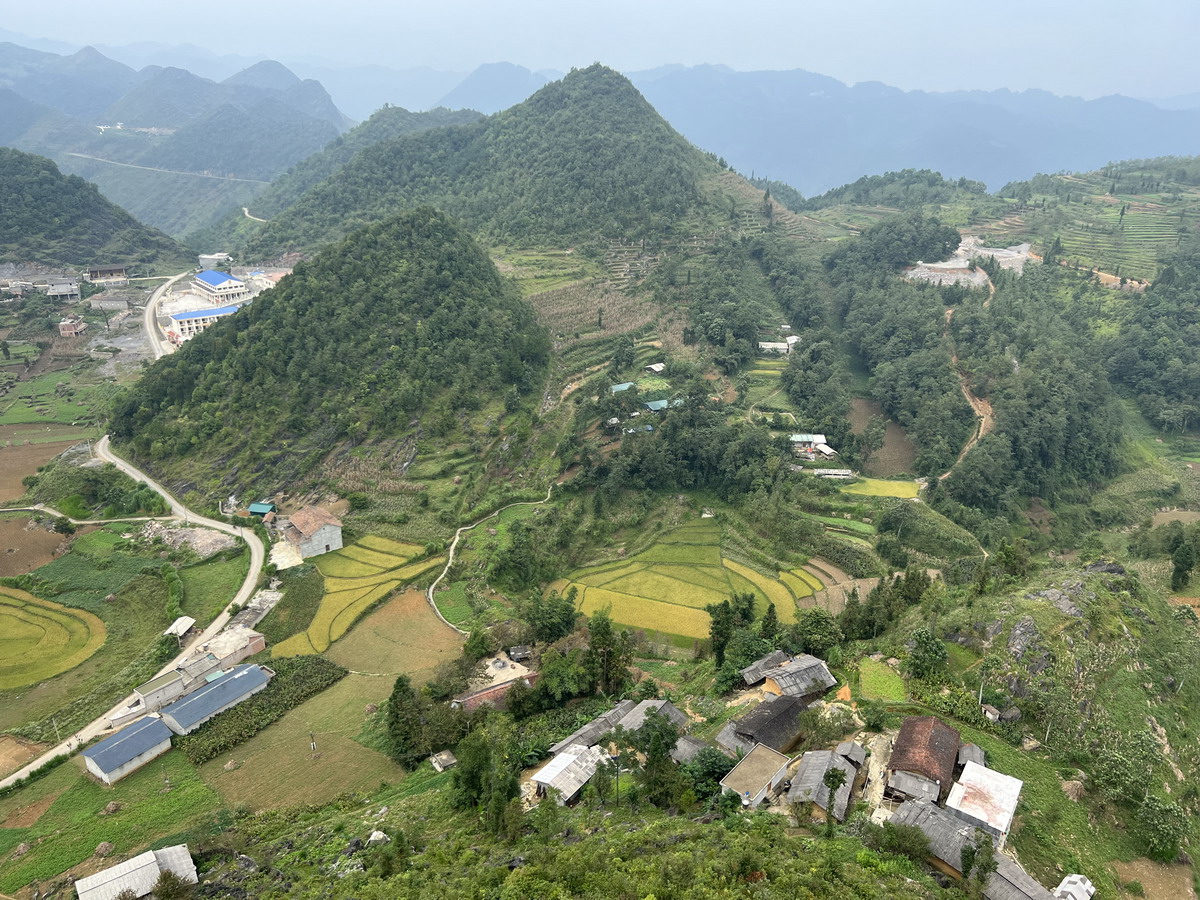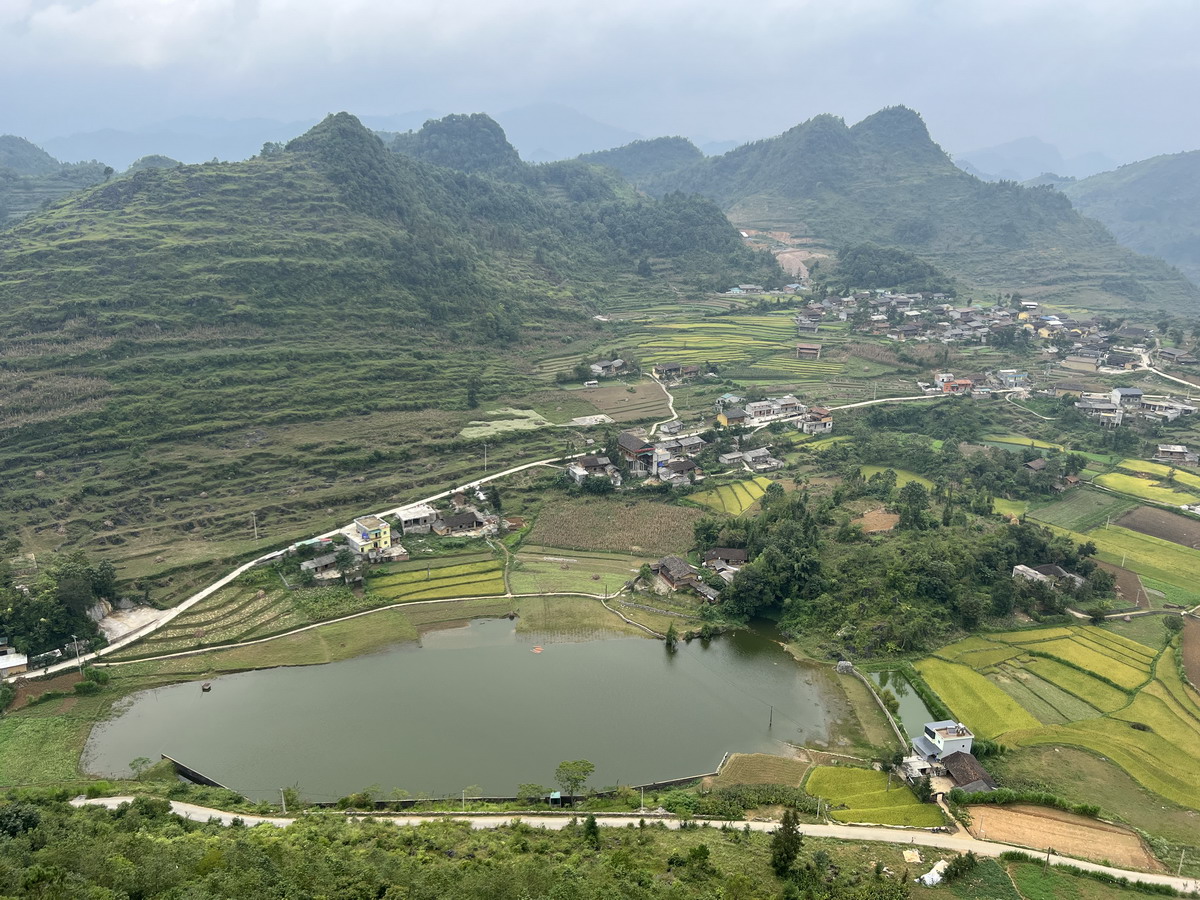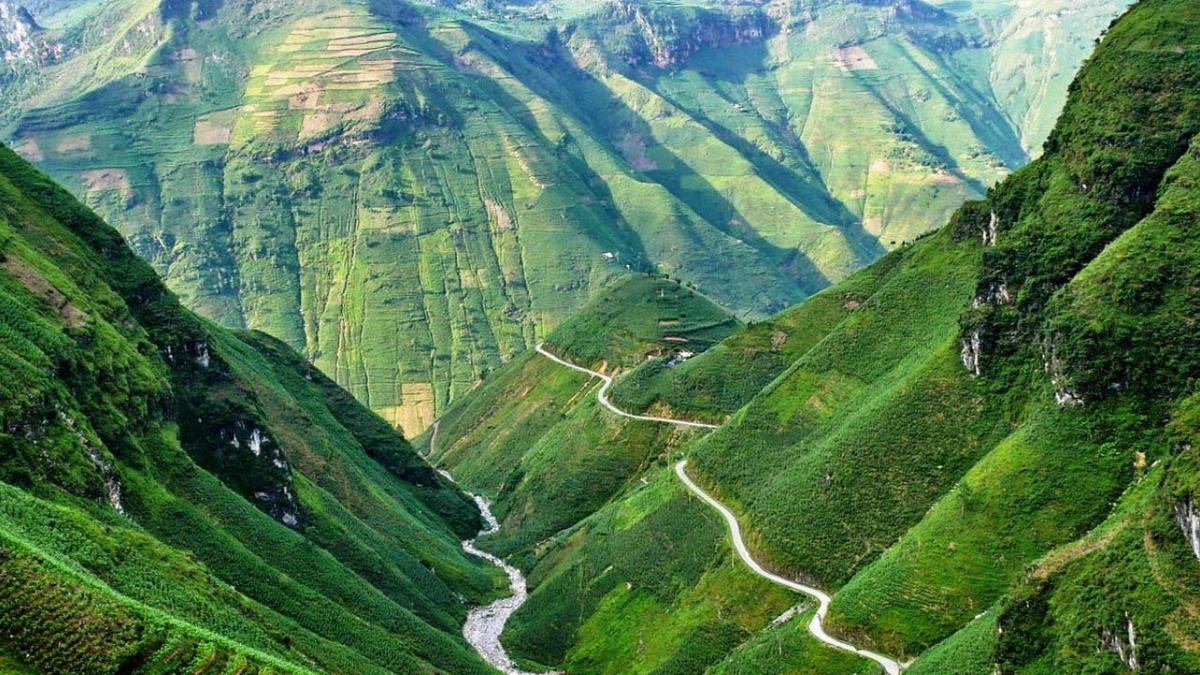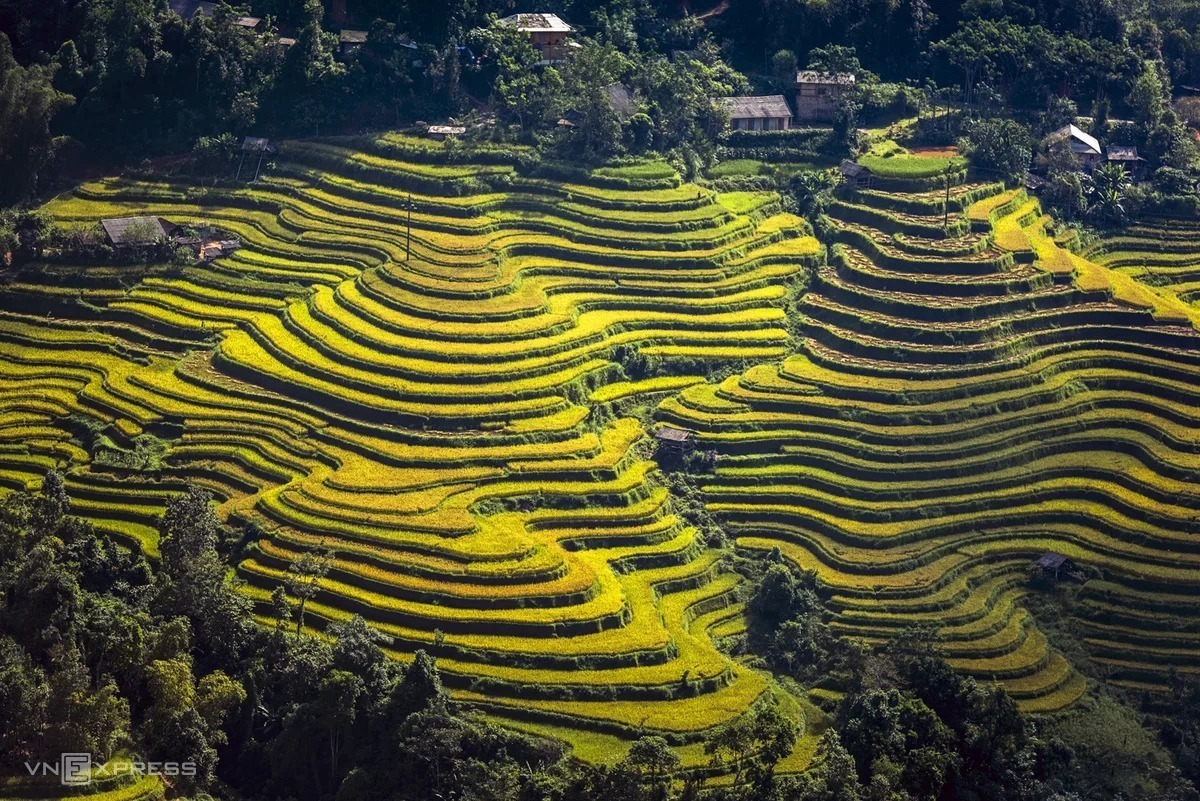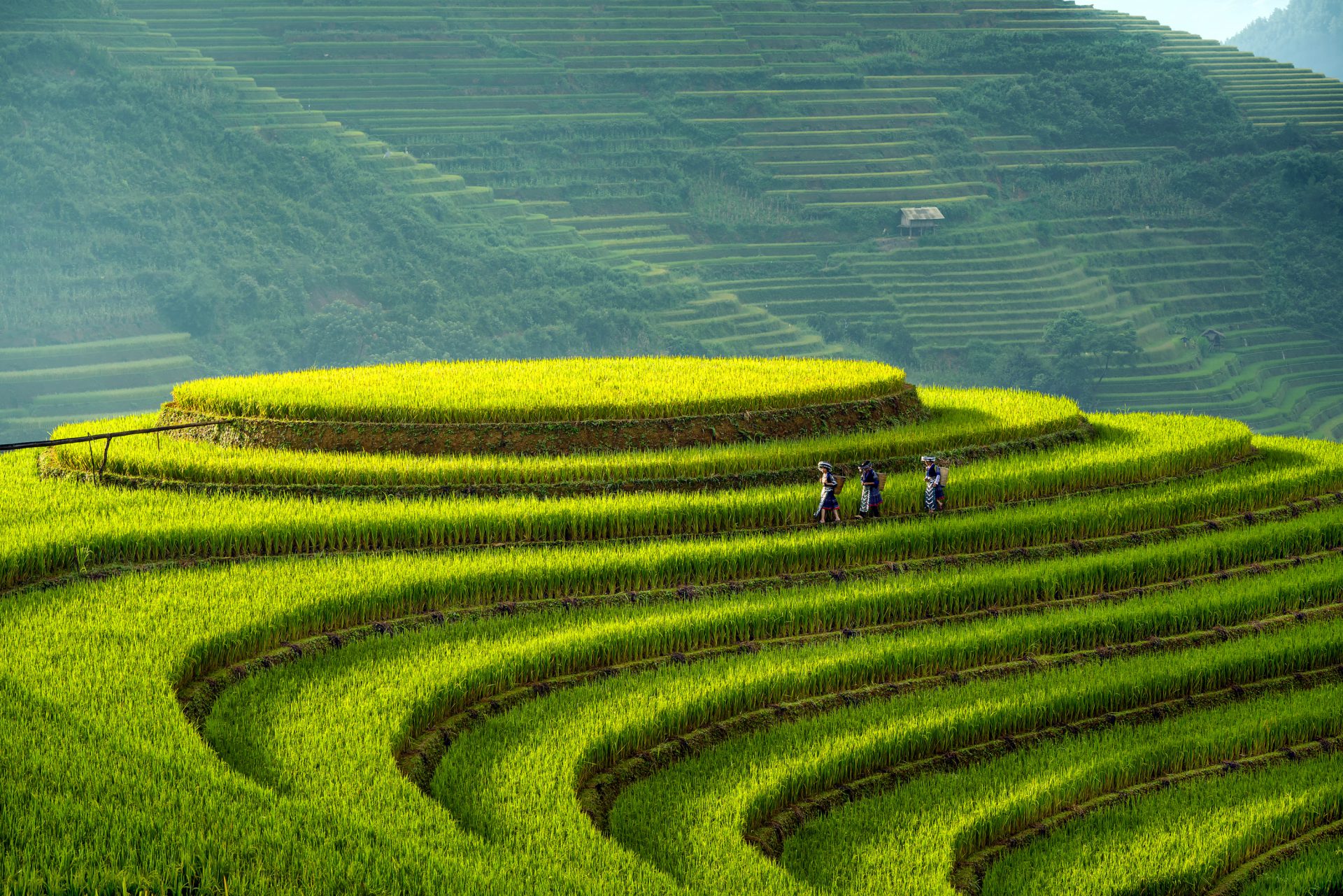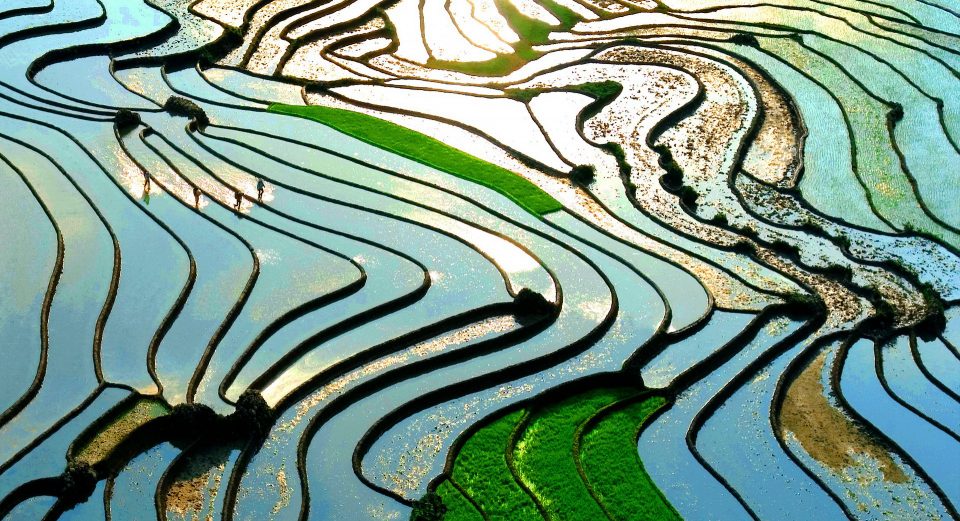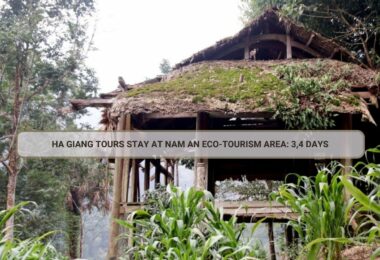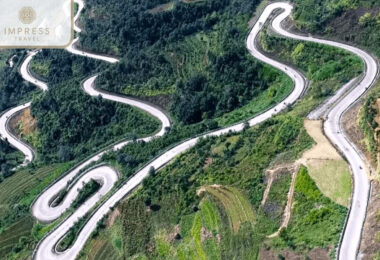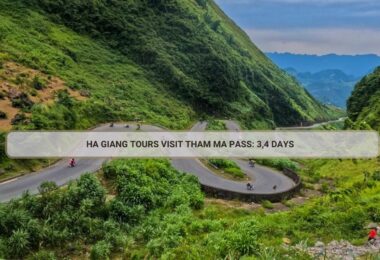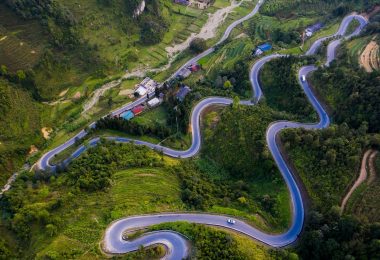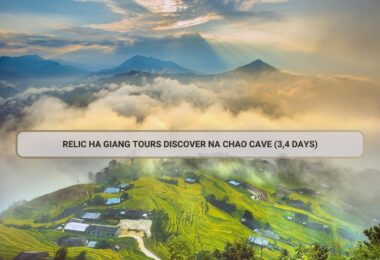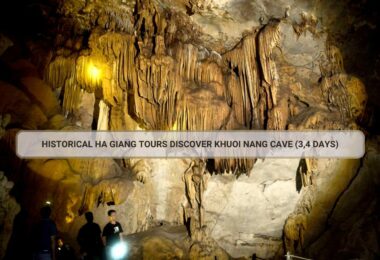It can be said that in Lung Cu, termites of land, mountains, lakes, caves, etc., all things related to geological heritage have been named and explained by the people in their formation. very interesting through the legends. With a very primitive, clear concept, considering “all things animate", meaning that everything has a soul, the indigenous inhabitants have put on this land mysterious veils through stories. fascinating legend.
Indigenous people still call the land of Lung Cu Cun Ta (Cun means mountain, Ta means equal). Looking down from above, the flat Then Pa field is about 50 hectares wide, surrounded by mountains with majestic cuesta (single inclined) terrain. Dragon Mountain is also known as Com Pi mountain (horse shoulder mountain in Lo Lo language) because if you look up from Lo Lo Chai village, Com Pi mountain looks exactly like the head of a horse rising up against the blue sky. and above is a red flag with a yellow star fluttering. At the foot of Dragon Mountain, or Mount Compi, are two lakes, which in the Lo Lo language language Co Ta (Cô means lake, ta means water) related to the legend of the sacred dragons that allow magical transformations.
The story of the formation of Dragon Mountain and 2 lakes has been told as follows: Once upon a time, a long time ago, a dragon flew down from the sky.
perched on a high mountain at the top of Lo Lo village. The dragon watched and saw that despite the majestic mountain scenery here, the lives of the people were extremely miserable due to the lack of water for daily life and production. Moved with compassion, before flying to the sky, the dragon left precious eyes for the villagers. From the eyes of the dragon, it turned into two clear blue lakes that never dry up all year round. One lake belongs to Lo Lo village, the other belongs to Then Van village. The mountain where the dragon used to sit is now called Dragon Mountain, where the Lung Cu flagpole is located.
The Lo Lo people here still believe that in the lake of Lo Lo village there is a pair of sacred dragons with transformation magic. Whenever it rains and the water rises, a pair of dragons that transform into white buffaloes appear to play by the lake. The old people often tell the children the story of the two dragons and tell them not to play by the lake or else they will be captured by the dragon and will get sick and have to do a thanksgiving ceremony. The offering can be 4 chickens or a pig that is brought out to offer at the lake shore… In the dry season, when the water in the lake recedes, the dragons hide themselves deep in the mountain. The people here believe that in the heart of the mountain where the dragon lives is a vast ocean containing water. Previously, there was only one lake in Lo Lo Chai village in the west, no lake in the east of Then Van village. About 20 years ago, suddenly another lake appeared in the East and the villagers thought that the dragon had moved there.
From the legends just mentioned above and there are even many other legends, we all realize that there are always two familiar images: Dragon and WATER. This reflects the basic perceptions of local people about the formation of the area’s topography. Dragon’s eyes are ancient karst funnels formed by the movement of the earth and sealed by clay – the product of limestone weathering. The later appearance of the eastern lake proved that before the clay products were not thick enough to seal the lake bottom, so the water was still permeable, then when the clay layer was thick enough to form an insulating layer, The lake appeared. As for “the vast seas of water" “the abode of dragons in the mountains" are understood as karst aquifers in limestone caves. Thus, it can be said that since ancient times, the people here have a very subtle knowledge of karst geology and hydrology that even many of us may not know yet.






























